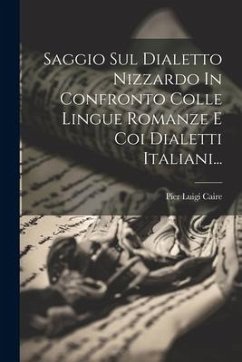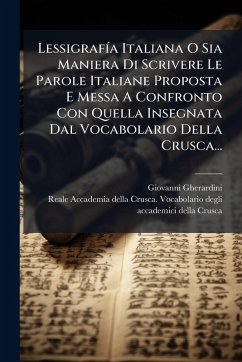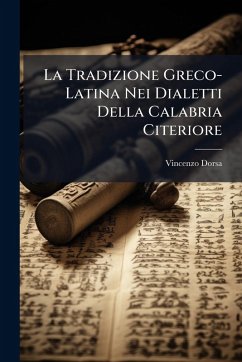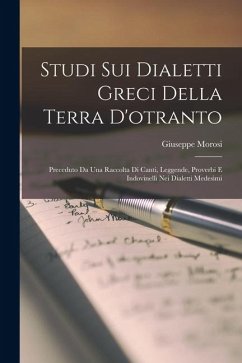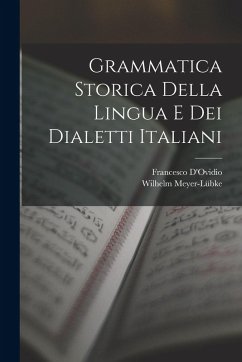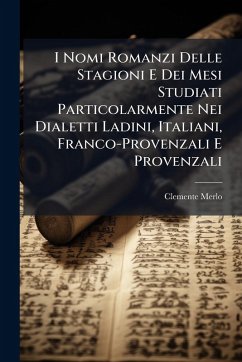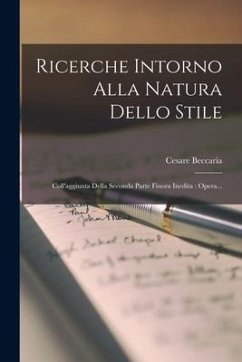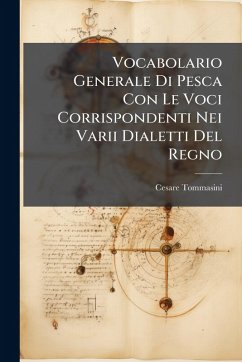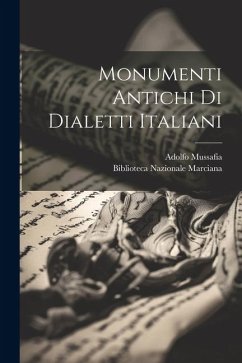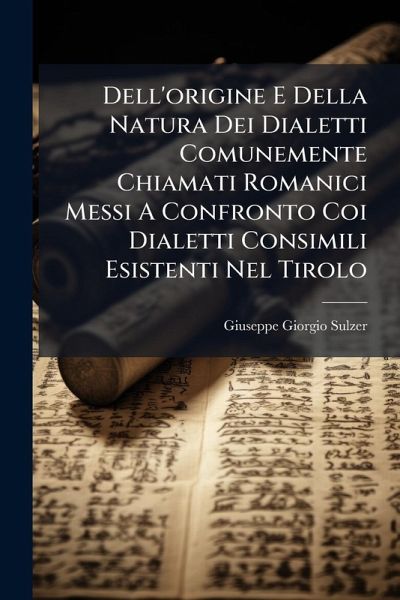
Dell'origine E Della Natura Dei Dialetti Comunemente Chiamati Romanici Messi A Confronto Coi Dialetti Consimili Esistenti Nel Tirolo

PAYBACK Punkte
11 °P sammeln!
This Latin text, "Dell'origine E Della Natura Dei Dialetti Comunemente Chiamati Romanici Messi A Confronto Coi Dialetti Consimili Esistenti Nel Tirolo," by Giuseppe Giorgio Sulzer, is a dissertation concerning the origin and nature of the dialects commonly called Romance languages, compared with similar dialects existing in Tyrol. This scholarly work includes a threefold vocabulary of Sanskrit, Celtic, and Oscan languages, alongside a polyglot resource. The treatise provides valuable insights into the field of comparative linguistics and dialectology during the period in which it was written. ...
This Latin text, "Dell'origine E Della Natura Dei Dialetti Comunemente Chiamati Romanici Messi A Confronto Coi Dialetti Consimili Esistenti Nel Tirolo," by Giuseppe Giorgio Sulzer, is a dissertation concerning the origin and nature of the dialects commonly called Romance languages, compared with similar dialects existing in Tyrol. This scholarly work includes a threefold vocabulary of Sanskrit, Celtic, and Oscan languages, alongside a polyglot resource. The treatise provides valuable insights into the field of comparative linguistics and dialectology during the period in which it was written. It holds enduring value for researchers and students of historical linguistics, Romance languages, and the linguistic history of the Tyrolean region. This work has been selected by scholars as being culturally important, and is part of the knowledge base of civilization as we know it. This work was reproduced from the original artifact, and remains as true to the original work as possible. Therefore, you will see the original copyright references, library stamps (as most of these works have been housed in our most important libraries around the world), and other notations in the work. This work is in the public domain in the United States of America, and possibly other nations. Within the United States, you may freely copy and distribute this work, as no entity (individual or corporate) has a copyright on the body of the work. As a reproduction of a historical artifact, this work may contain missing or blurred pages, poor pictures, errant marks, etc. Scholars believe, and we concur, that this work is important enough to be preserved, reproduced, and made generally available to the public. We appreciate your support of the preservation process, and thank you for being an important part of keeping this knowledge alive and relevant.



